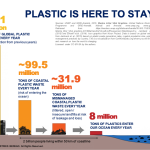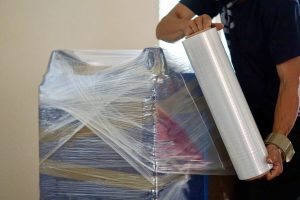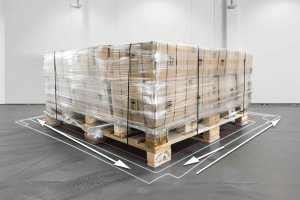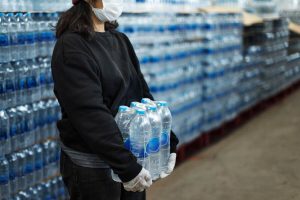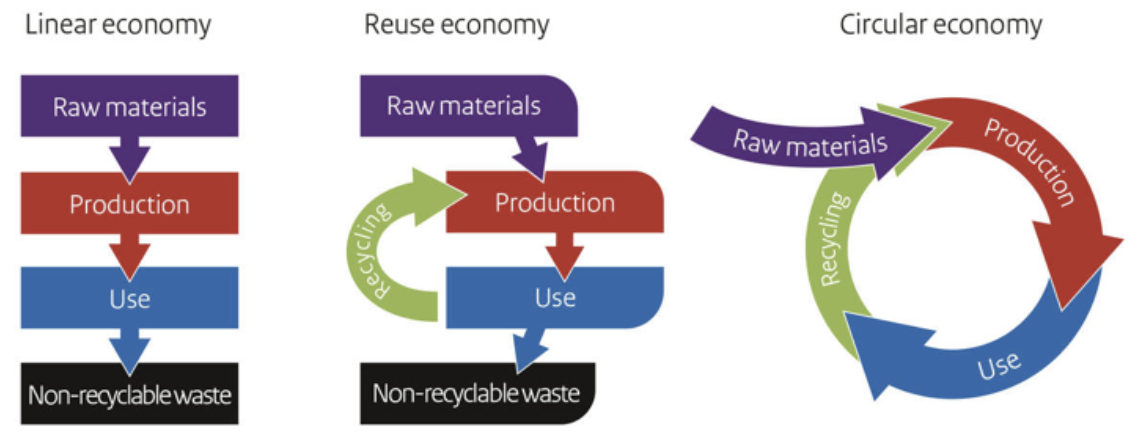
We’ve all heard of the term closing the loop. However, have we truly adopt the possibilities in the packaging industry? What does it take for us to achieve sustainability? How can we all work together to close the loop?
Let’s Talk Circular Economy
The idea of a cyclical system of production has been around since early 1966. However, the term circular economy appeared for the first time in 1988.
Our economy has always been linear.
That means we take raw materials, make them into products, then once used, namely packaging, we throw them away.
In the recycling economy, we reuse materials by giving them a new life.
However, to ensure our dwindling resources are sufficient now and in the future, we must adopt a circular economy.
Circular economy, as defined by Ellen MacArthur Foundation,
“Looking beyond the current take-make-dispose extractive industrial model, a circular economy aims to redefine growth, focusing on positive society-wide benefits. It entails gradually decoupling economic activity from consuming finite resources and designing waste out of the system. Underpinned by a transition to renewable energy sources, the circular model builds economic, natural and social capital. It is based on three principles: design out waste and pollution; keep products and materials in use; regenerate natural systems.”
The aim of closing the loop is to
- Prevent wastage
- Make products more efficient
- Reuse materials
- And when new raw materials are needed, they are obtained sustainably, so we do not damage our natural and human environment.
Here’s a diagrammatic representation of what it means to transform our linear to a circular economy.
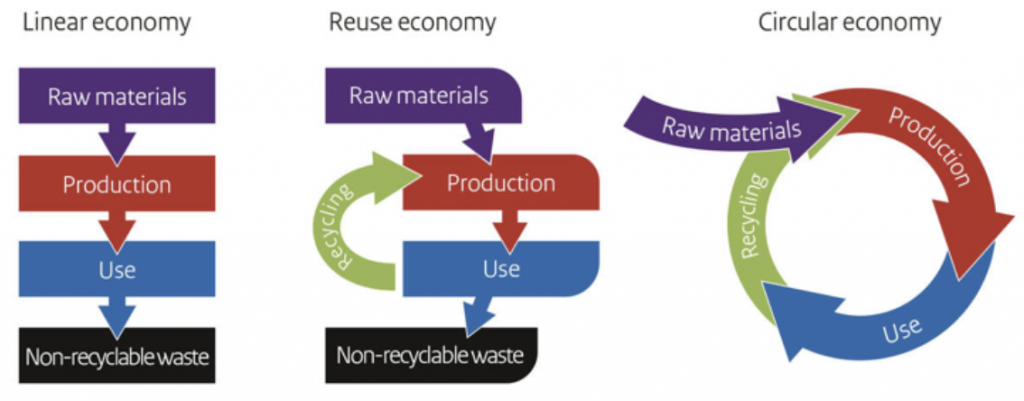
(Source: https://www.government.nl/)
Closing the Loop in the Packaging Context
In a linear economy, businesses use raw materials to produce packaging materials, which are then disposed of as residual waste after use.
Typically, this is how a linear economy would look like to produce flexible packaging.
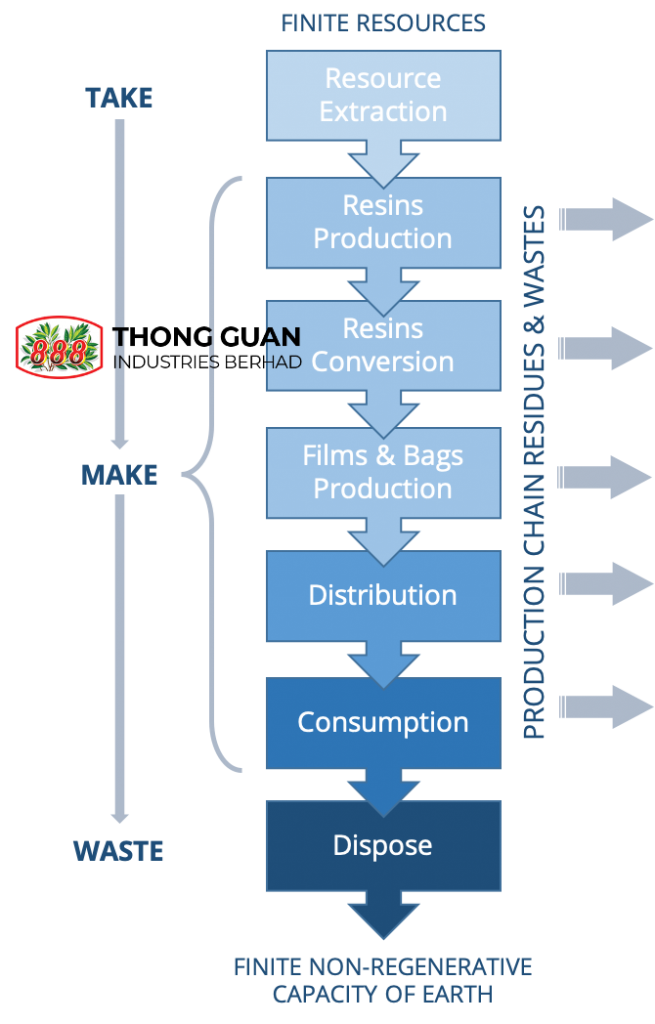
With finite resources of crude oil and the non-generative capacity of Earth for our disposal, this linear economy is not sustainable.
Wastes are also created in two capacities throughout the production cycle— production wastes & residues (PIW) and consumer wastes (PCW).
Can packaging production ever go full circular loop?
In the packaging context, it is relatively impossible to adopt a full circular loop on the get-go.
Why is that the case?
Well, we all know that packaging, particularly tertiary packaging for shipments, requires quality stretch films to hold our loads together.
And as we have excessively talked about recycled content stretch films in our #RecycledPlasticsSeries articles. As much as we R&D our way into recycled films, that does the job of strong load containment. We cannot deny that recycled contents hurt the mechanical properties of films to a certain degree.
Quality films are vital in high containment force.
Otherwise, it defeats the purpose of sustainability as well with the wastage from damaged goods on arrival.
Thong Guan goes reuse economy in closing the loop attempt
As a sustainability measure, we try to reduce the number of raw materials used as much as possible to generate less waste.
While concurrently retaining the film quality to improve the containment force of recycled films.
In other words, it is to protect the goods that will generate waste from accidents, unsaleables, and unnecessary wastage.
So we adopt the hybrid circular economy in our #LiveGreen initiatives—RE:DO & RE:USE.
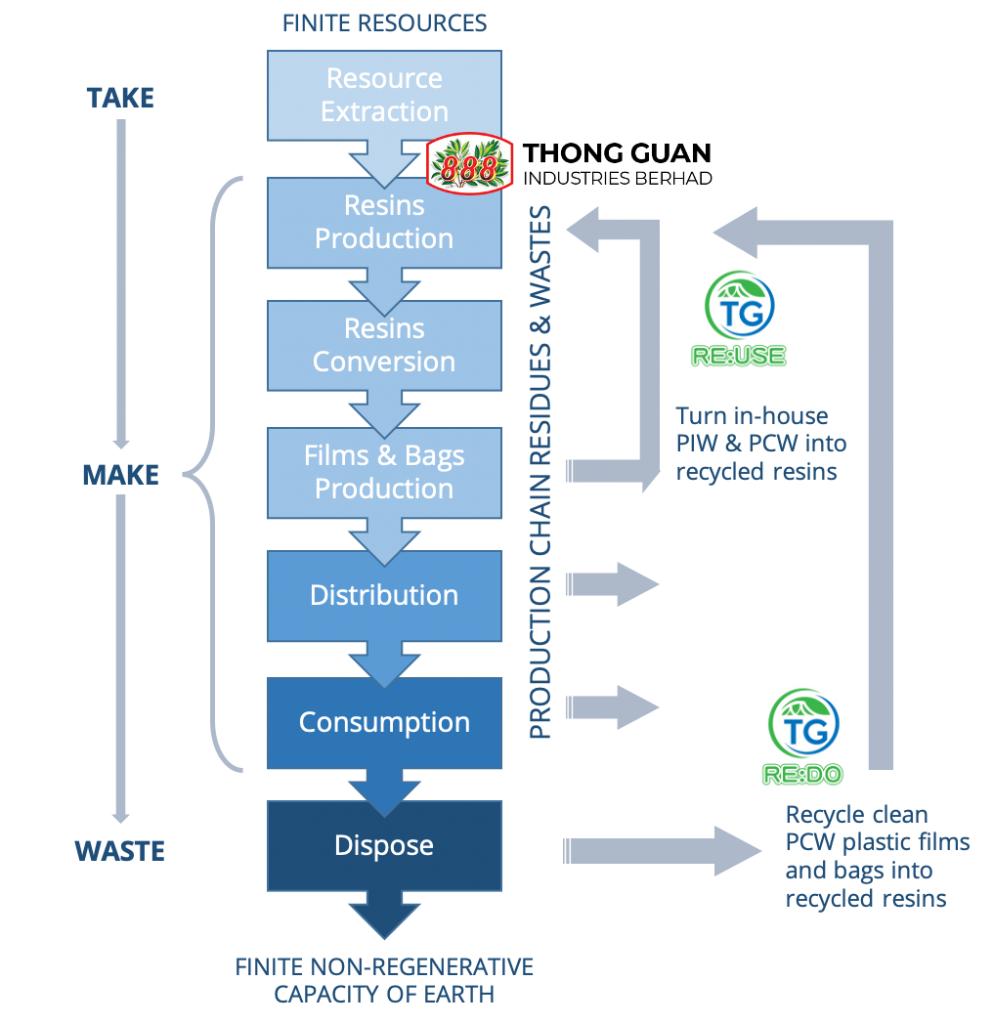
As for RE:USE, our Repurposing Program, we take our internal PIW & PCW and churn it back into our production to reduce as much in-house waste as possible.
We can achieve a lot of reduction from production residue (PIR) or raw materials packaging (PCW).
The following graph shows our total PCW collection for six months and repurposing them into trash bags.
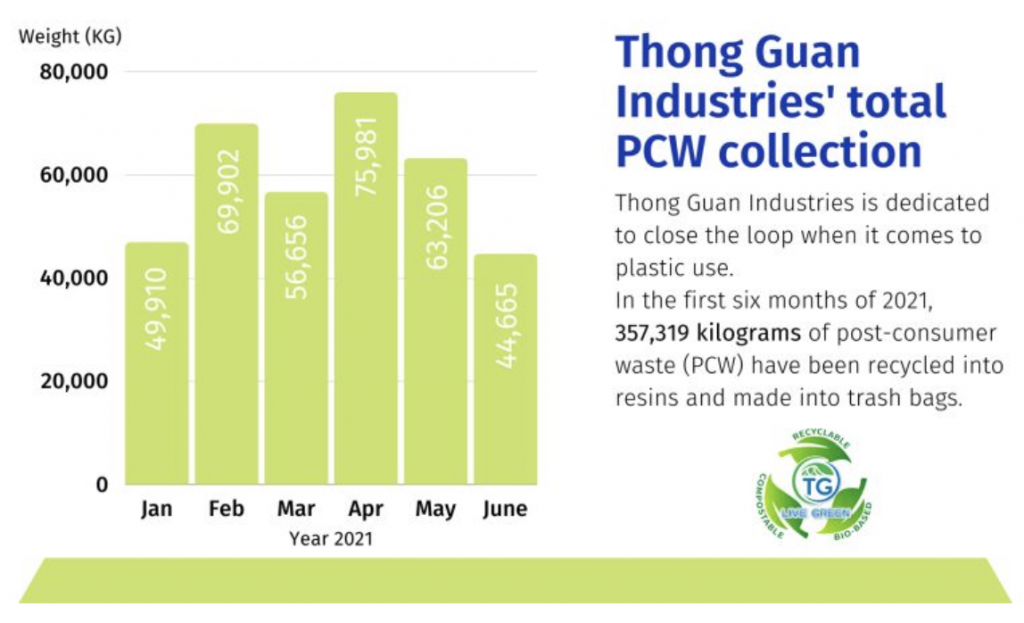
Under the RE:DO program, we restart the purpose of plastics by recycling clean, used films and bags, helping vendors to achieve their sustainable goal, reducing carbon footprint while retaining the quality of films with our engineering innovation.
Our primary focus of RE:DO is to increase PCR capacity and innovative possibilities. More efforts will be invested into this program to increase our efforts in closing the loop.
You can read more about why we should focus on post-consumer recycled resins here.
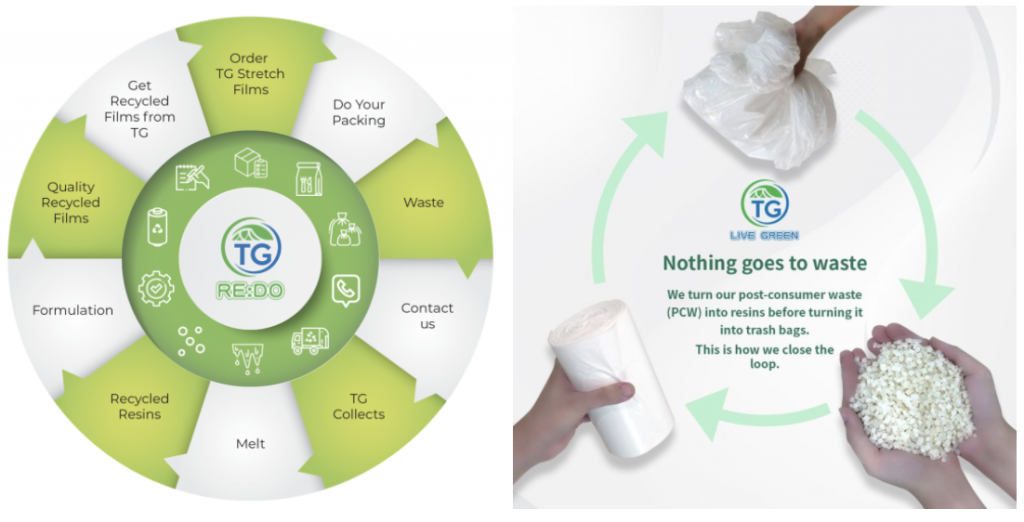
It’s fairly easy to participate in our #LiveGreen Initiatives. Just contact us at info@thongguan.com to get started.
Closing the Loop on Packaging Waste
Ideally closing the loop on packaging waste requires more than just on the production loop.
“We want to walk the green talk beyond cultural change but also green policy, governance, mindset, technology & innovation adoption while retaining our brand promise to our clients.”
Here’s a summary of our thoughts on the circular economy for packaging.
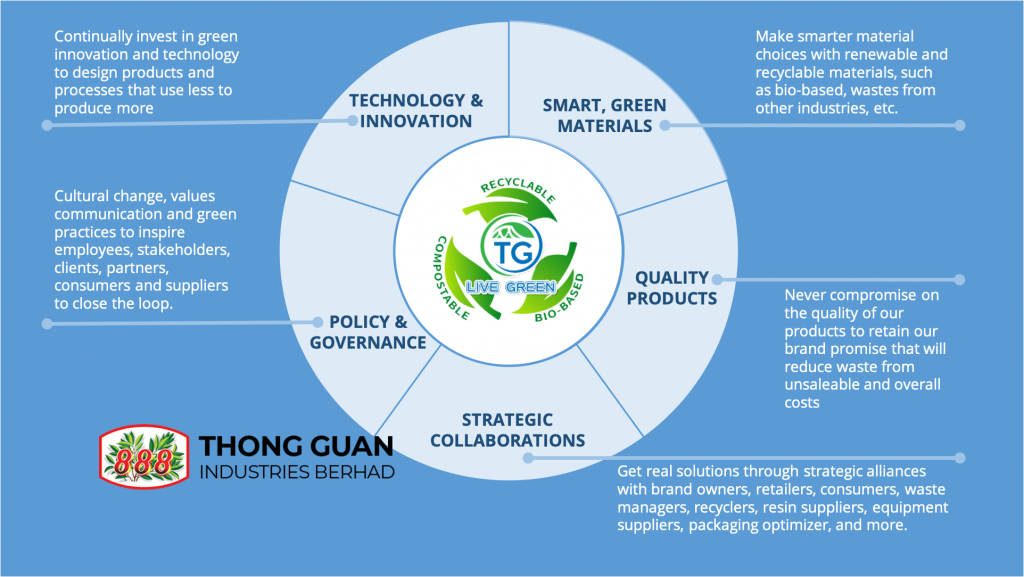
In summary, we believe it takes more than just improvements in the production cycle to achieve our sustainability goals.
- Technology & innovation: investment of green engineering in terms of product design, production processes, and load optimization
- Smart, green materials: making smarter material choices like tall-crude oil from paper industry waste (which closes the industry loop) or renewable sources
- Quality products: uncompromising product quality that will reduce waste from damaged goods and unnecessary costs
- Strategic collaborations: collaboration with stakeholders to have better recycling collection and processing to increase the quality of clean used plastic wastes
- Policy & governance: internal green practices and governance that will inspire not just stakeholders but also employees and consumers to close the loop
These five areas must go hand-in-hand synchronously to achieve our goals. Which, in turn, helps our customers’ sustainability goals as well.
Join Us Today in Closing the Loop
Closing the loop in the packaging industry takes time and effort. However, most importantly, it takes more than just one party to make it happen.
Join us today in our #LiveGreen initiatives to create a more sustainable future for our businesses to thrive.
Here are some results from our #LiveGreen culture you may be interested in exploring.
- #LiveGreen Initiatives
- Nano Series bio-based stretch films
- Nano Zero, coreless nano presetretch film
- Nano Bolt, 1” core, fatigue-fighter stretch film dispenser
- Nano Green, 30% PIR recycled machine film

